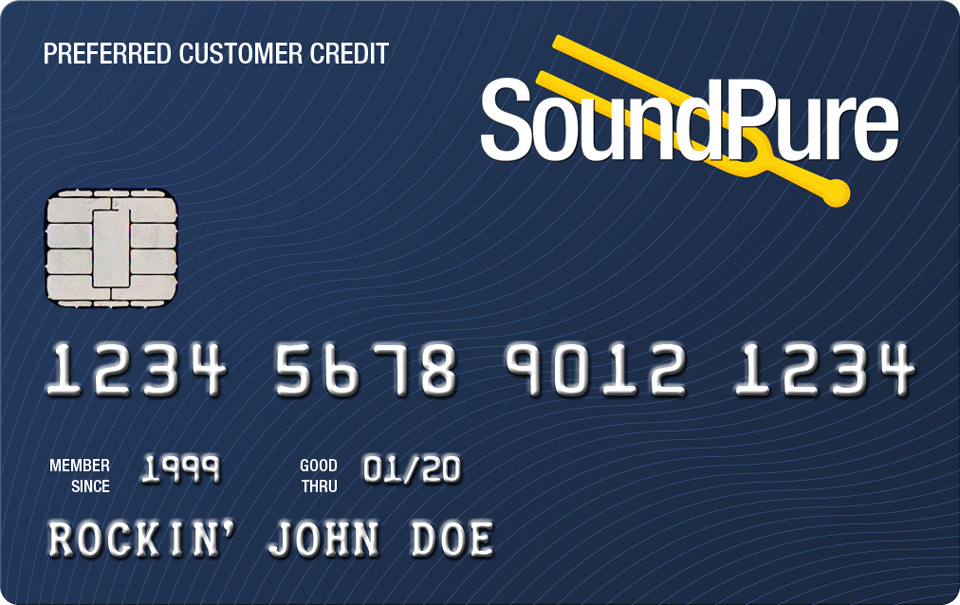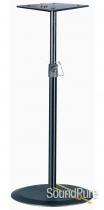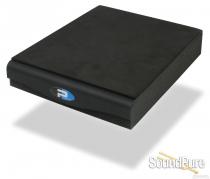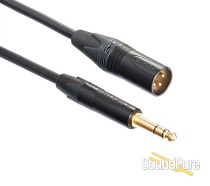NUMBER ONE IN SOUND
For us the sound is always in the foreground. When it sounds good, we like to listen. To get such a sound, you need experience and technical finesse. We have incorporated both into the Series One.
Speaker & Subwoofer
A production can be monitored via two switchable pairs of speakers. A subwoofer is also switched on and off with speaker pair A.
In the middle position of the switch, the speakers are switched off, which is convenient because there is no need to turn down the volume.
Two Stereo Inputs
Two analog stereo sources can be connected to the Control One such as a DA converter, CD player, mixing console, synthesizer or analog tape machine/tape deck, which can also be listened to mixed together (1+2).
Line Out
The selected input signal is directly routed to the line out. This allows the Control One to be looped between devices without “losing” an output.
If, for example, several people listening via headphones, a headphone amplifier can simply be connected to the Line Out.
The signal can also be recorded analog or send to a mixer for further processing.
Three Monitoring Modes
are offered by the Control One. In the middle is the default setting “Stereo”. The mono compatibility can be checked when the switch is set to “Mono”.
The special feature is the channel swap function:
L/R > R/L
reverses the stereo image. L/R becomes R/L. This is especially important and extremely time-saving while searching a sound library for samples in video dubbing that should match a scene with direction of movement.
If the direction is not correct, the sample has usually to be loaded into the DAW to switch channels.
With the L/R > R/L function this is no longer necessary. The direction of movement can simply be swapped while prelistening samples in the library.
The Headphone Power Amp
Poor sound over headphones? Not enough juice? Not here.
Control One delivers a rich headphone sound and it can get really loud. The output stage of the headphone amplifier is designed as a push-pull amplifier in class AB mode. The output stage transistors are thermally coupled and thus run particularly coherently, which contributes to a consistent and stable sound image. The power supply has a buffer circuit with low source resistance, ensuring generous current reserves even when driving low-impedance headphones.
The Revolution
The revolution in the headphone amplifier is the Phonitor Matrix – mixes made on headphones sound as they were mixed on speakers.
The Phonitor Matrix in its largest expansion stage has three setting parameters: Crossfeed, Speaker Angle and Center
Level.
In the Control One, the center level is preset to -1 dB and the speaker angle to 30°. These are the most commonly used values.
The crossfeed function determines the crosstalk of the channels, the so-called interaural level difference. The intensity of the crossfeed is fully variable.
When the Crossfeed control is in the OFF-position the Phonitor Matrix is switched off – it is removed out off the audio signal path via relay (hysteresis circuit).
Best fit
If the active speakers or the power amplifier are very sensitive the playback may already be fairly loud when the Volume control is in the first third of its control range. By activating the -10 dB dip switch the output level is lowered to accommodate for a wider usable range of the Volume control.
With the Rec 1+2 dip switch both line inputs are mixed together and can be recorded via USB.
The Power Supply
Good sound always starts with the power supply. This is where you lay the foundation for the performance of the entire device.
Although we “only” supply a 12 V plug-in power supply unit, the secondary power supply inside generates a voltage level of +/-17 volts for the analog audio sections with which professional levels of up to +22.5 dB can be achieved!
An elaborate low-drop operating voltage regulation provides more “juice” and regulates cleanly even when the maximum operation voltage is reached.





















